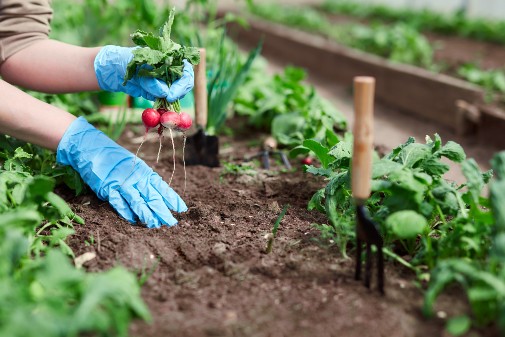Researchers evaluating a nature-based programme of activities for patients with mild to moderate mental health conditions have shown that improvements in mood and anxiety levels can be seen in as little as 12 weeks.
As part of the UK government’s commitment to transform mental health services, seven ‘test and learn’ green social prescribing sites were identified across England, which included a programme in Humber and North Yorkshire – the first of the seven sites to publish results from the national programme.
Green social prescribing is a practice whereby a healthcare professional refers a patient to community-based nature activities to help improve health and wellbeing beyond medical treatments. Currently these programmes are in a testing phase, but evidence is now pointing to the need for investment in this area to make it an additional option for patients across the country.
More than 220 participants from across Humber and North Yorkshire were included in the programme, and their mental health status was evaluated before and after exposure to an organised programme of nature-based activities, such as horticultural and care farming, sport and exercise, and outdoor mindfulness and craft-based activities.
The majority of participants took part in the programme weekly between one and four weeks, five to eight weeks, and others between nine and 12 weeks. The team used the Office of National Statistics measures of personal well-being, as well as the hospital anxiety and depression scale (HADS) to understand if participants had made improvements.
Across the board, participants reported improvements in wellbeing and mental health. But participants who took part in longer programmes – typically nine to 12 week – or took part in activities related to horticulture and care farming, showed greater improvements in mood and anxiety levels compared with those involved in shorter programmes – one to four weeks – or in activities such as outdoor crafts, creative and mindfulness-based sessions, or sport and exercise.
The signs of improvement were similar to those seen in short-term cognitive behavioural therapy (CBT), where someone might meet one-to-one with a therapist over a period ranging from six weeks to a year or more
Professor Peter Coventry, Director of the University’s Mental Health and Addiction Research Group, said: “We have known for some time that nature has a positive impact on health and wellbeing, but in more recent years, a stronger evidence-base has grown that proves this to be true for mental health in particular.
“The fact that activities such as gardening, tending allotments, and care farming had the most impact on the participants in our study, demonstrated that it is not just about being passive in nature, but connecting with it in a meaningful way.
“There is also something to be said for connecting with nature in the company of other people who live in the same place as you. Anxiety and depression can often be born out of loneliness and feelings of disconnectedness, so it makes sense that taking part in shared activities close to home – especially those that involve caring for and improving your local environment – can help lift mood and reduce anxiety.”
The study showed that these positive impacts were seen in all ages, which ranged from age 18 to age 85, and across genders. Researchers are now calling for more investment to be made to support these community activities and the employment of green social prescribers that GPs and other health and social care professionals can refer their patients to.
Trish Darcy, research associate from the University’s Mental Health and Addiction Research Group, said: “This intervention might not work for everyone, but through an initial exploratory conversation a social prescriber will discuss with a patient or user of the service if nature-based activities would be suited to them, and for that choice to happen we need more investment to support these community-based activities”.
“In our study 65% of participants were from low socioeconomic groups and we now know that not only can it help improve their mental health, but participation was high for horticultural based activities in particular, meaning that not only is it good for the individual, but for the local community environment too.”







